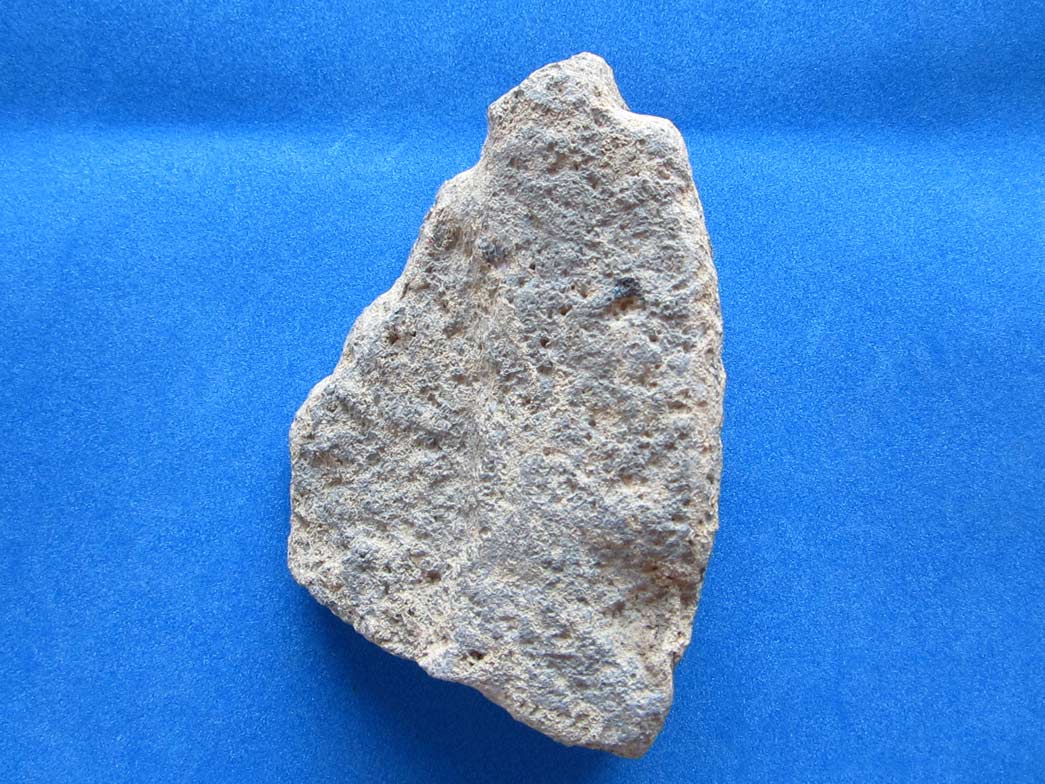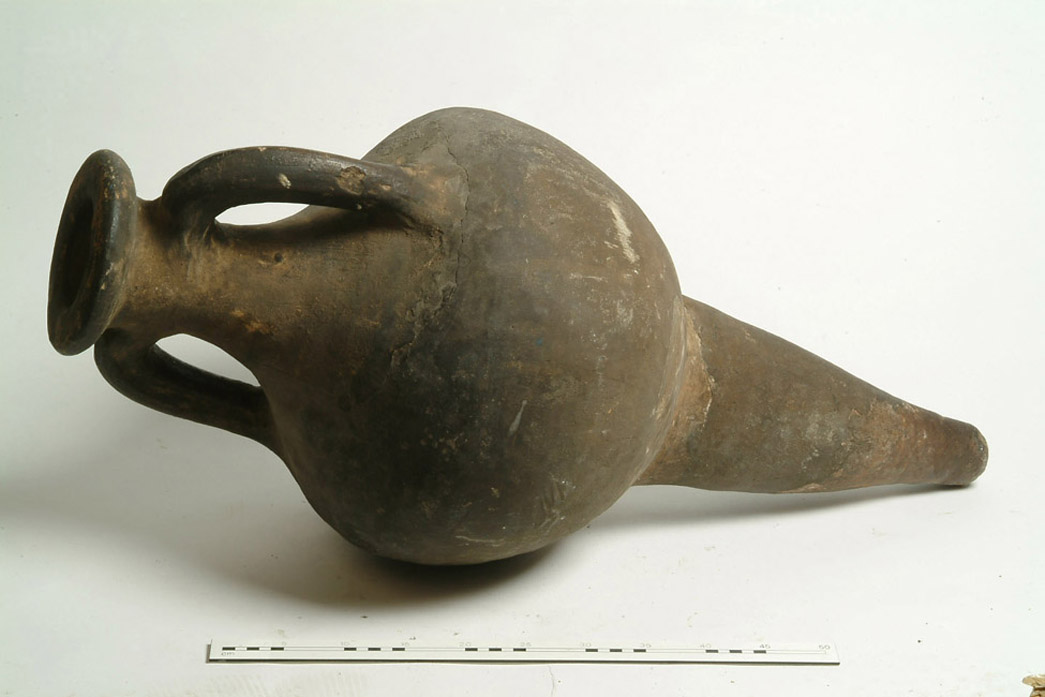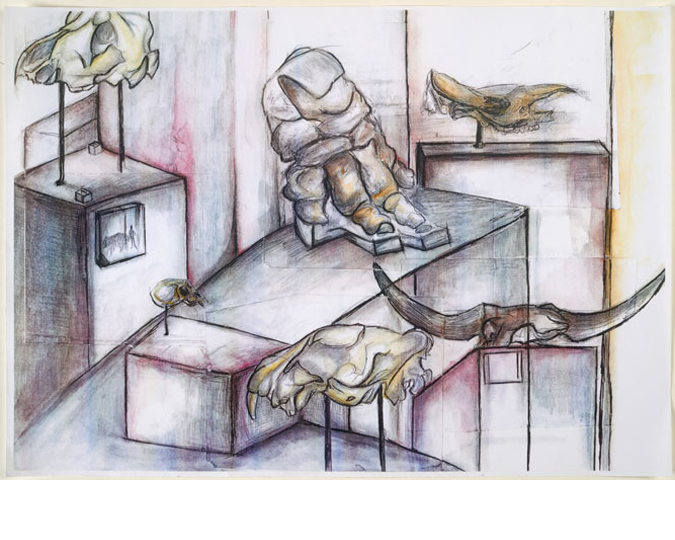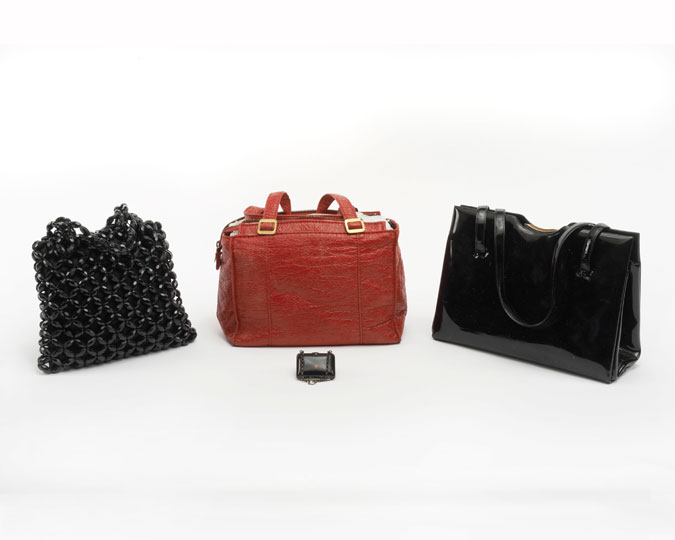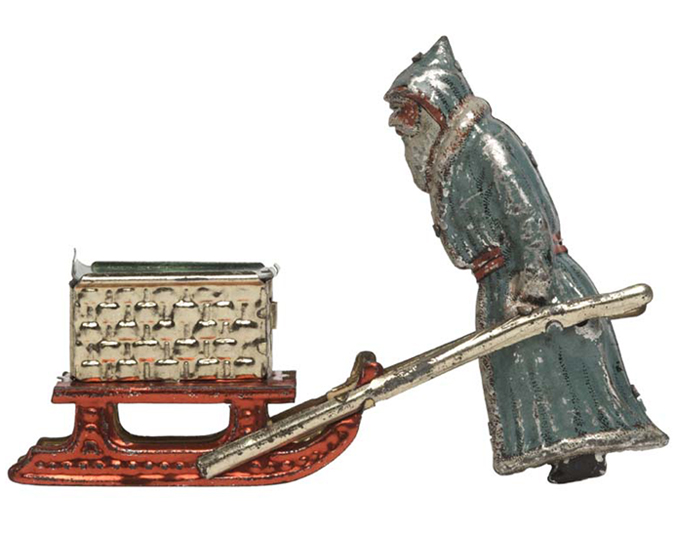The Museum of London's Archaeological Archive is the largest in the world, with over 5 million artefacts that were excavated across the city. Some of these have posed peculiar puzzles for our archaeologists to figure out - not just what they are, but when they were made or used.
The first artefact comes from an archaeological dig on a motte-and-bailey castle, built in Hertfordshire during the 1140s: the 1960s excavations at South Mimms. In general, the archaeology from this dig could all be quite closely dated to the 12th Century and associated with the motte-and-bailey castle discovered there. However, one object stood out as being more Roman than Medieval. This object was a humble piece of stone.
Or at least, that’s what you may think at first glance. This stone is actually a piece of Mayen lavastone quarried from the Eifel Hills in Germany. This area was commonly used by the Romans as a source of stone for use as querns – large, round, course blocks used to grind down grain on a industrial scale. Indeed this is what our object is and how it was used during the Roman period. But what’s it doing on a Medieval castle site? Well, it appears that the stone had been reused in this period as a piece of building material. Fairly close to this area were former Roman settlements which would have been gone into disuse and had their building material robbed by future generations. It it thought that that is what has happened here.
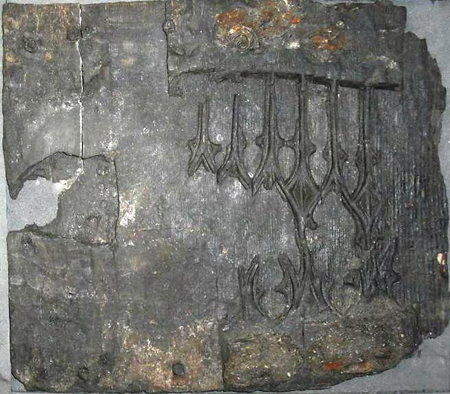
The second object is a similar story. Here though we have something a bit more ornate - and one that, truth be told, is lucky to have survived at all. This object originally was a late 15th/early 16th cupboard door, decorated in fine style with gothic tracery – you can just about see where the hinges and key hole once were. What’s lovely about it though is that it was found in a completely different context, one that shows a great spirit of make do and mend; found in the riverside revetments off Vine Lane, the Elizabethan suburbanites of Southwark had reused it to patch up their local waterfront against deluge from the Thames. It was this reuse, causing it to be waterlogged, that led to its preservation. It could have easily been overlooked and got bundled up with the rest of the wood found from the site. A good case of making sure you take a good look at every object that is excavated!
To end, sometimes things just don’t look right. The final object is a good case in point. To the untrained eye the above object would seem to be an example of a Roman amphorae, with features you might expect to see such as the two handles and the long pointy base. Yet, there are in fact lots of variations when it comes to amphorae; the two most common are the long pointy ones (for things like wine and fish sauce) and the big round bellied ones (for olive oil). In this instance we have both. Stuck together. Incorrectly. The rim and handles are from a Dressel 20 type amphora, one of those that should have the round belly. As for the base, well it’s not even all pottery! Fragments of other amphora types have been pieced back together with bits of plaster to form a long pointy vessel, which looks like an amphora!
This object’s origin is unfortunately unknown (so we can’t point any fingers at the person who reconstructed it) but it goes back to the days before the Museum of London. In the late 19th and early 20th centuries, a lot of guess work went on when trying to reconstruct vessel fragments and this is the result.
Want to get updates about the city's buried past straight to your inbox? Sign up for our Archaeology newsletter to find out about upcoming exhibitions, events and articles.








